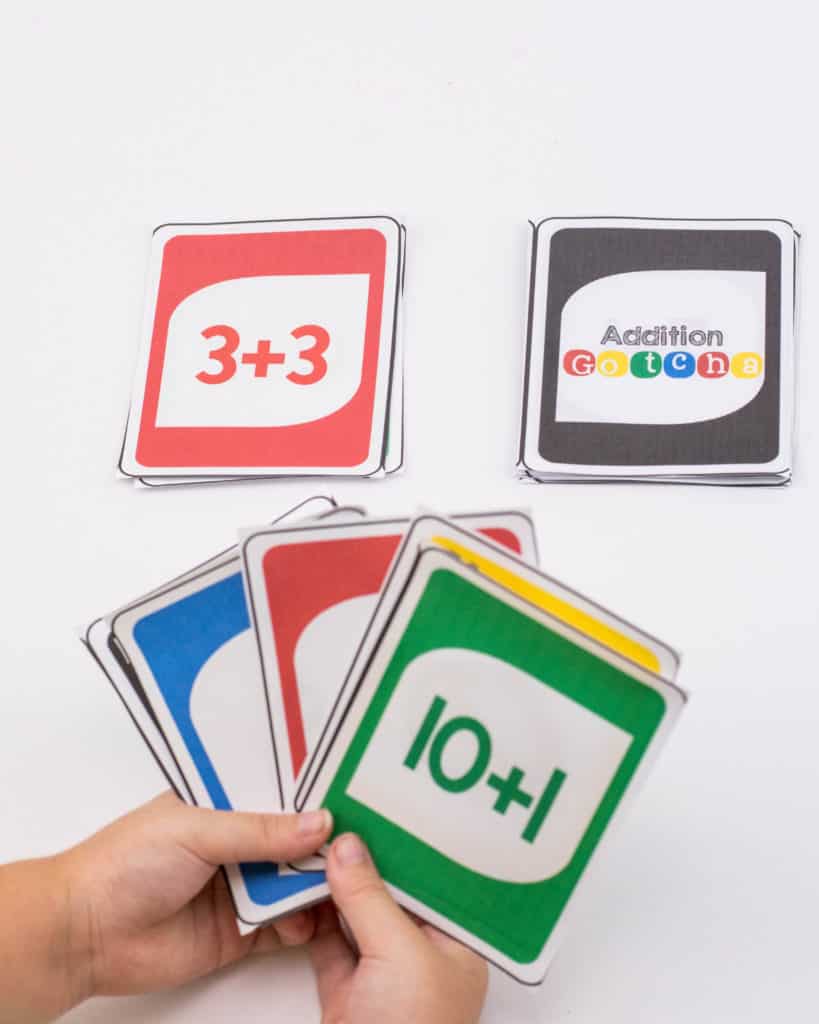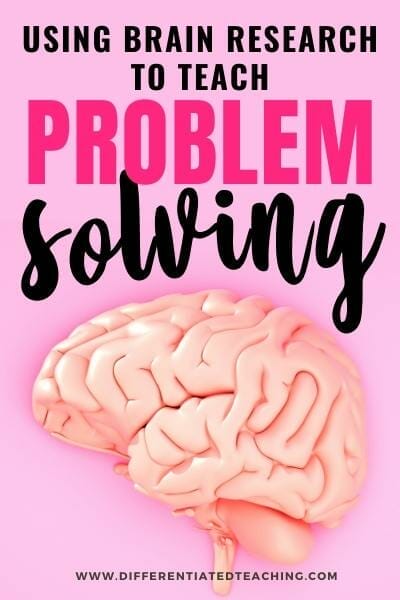5 Simple ways to build math fact fluency
Math fact fluency is an important step toward math proficiency. Students who know their facts are better equipped to manage math word problems and throughout their real-world experiences. Despite knowing the reasons math fact fluency matters, it can be hard to find time adequate time and engaging resources to practice this foundational skill.

What is math fact fluency?
Fact fluency refers to a student’s ability to identify the solution to basic math facts accurately and efficiently.
Depending on what grade level you teach, your standards might include mastery of basic addition, subtraction, multiplication, or division…or a combination of several of these.
As you work with your students your goal is to have them be able to solve basic problems quickly and accurately so they can focus their mental energies on more difficult higher-level math skills, like problem-solving.
How to build math fact fluency
The biggest thing students need to develop fact fluency is consistent, frequent opportunities to practice. The more students practice their facts, the more quickly they transfer from short-term to long-term memory.
The biggest challenge is figuring out how to practice math facts so students don’t get bored and disengage. Memorizing, which is ultimately what is happening when students become fluent with their facts, is a pretty tedious process for most things.
However, when we ask students to focus on rote memorization they often disengage and we end up losing valuable instructional time.
So today I am sharing some inexpensive and engaging ways to practice math facts so your students can develop fact fluency more quickly.
Cheap or free resources to get kids excited to practice math facts
Despite knowing we should be having our students work to build their fact fluency, many classrooms don’t have the time or resources to do so efficiently.
Today I am going to share some free or inexpensive resources you can use to get students working on their math facts in class.
Digital Math Fact Practice
Students love working on computers, and more campuses are moving toward one-to-one technology access through grants and district initiatives.
Digital fact practice is an opportunity to build in errorless independent math fact practice for our students. Many sites give instant feedback and help students correct errors in computation. Other websites offer tools and digital flashcards that can help students build their speed and accuracy with basic facts using fun, interactive formats.
There are so many fun math fact games available for free online. You can read more about my favorites here: 30+ Websites for Free Math Fact Practice
For the purpose of this article, I’m going to tell you about Xtramath because it is easy to register for and offers good data on the backend to help you make instructional decisions.

Unlike many similar sites, Xtramath lets you set up individual student accounts on their free version. This can be really powerful for conversations regarding RTI or MTSS supports with struggling students, who often have considerable gaps in computational fluency.
The site also optimizes practice to meet each student’s individual needs and it offers scaffolded supports. This is huge because we don’t want to sacrifice accuracy for speed or we are defeating the purpose of practice.
As students demonstrate mastery of certain facts, it is documented in the student’s data and those problems are rotated out of repeated practice and into maintenance mode.
Xtramath is available via an app or their website, and it takes less than five minutes per day to complete their personalized assigned practice.
Partner or Small Group Games
Games can be an especially beneficial tool for math fact fluency because they are engaging and students don’t feel the same pressures as a timed test or other fluency building activity.
There are lots of fun ways to use regular playing cards to practice facts. For example, you can use a deck of cards to play a modified game of WAR! where both students turn over the top card from their pile and the first to add (or multiply) them gets to keep both cards.
You can also play a similar game with dice! Don’t be afraid to mix it up and play using items you can find around your classroom.
Just make sure you partner your students that are somewhat close in skill level or the excitement of getting to play a game tends to be short-lived.
One of my students’ favorite games was GOTCHA!

The game is played like a traditional game of Uno, but the cards contain either numbers or a basic math fact. Students work to get rid of all their cards by matching color, number, or the correct answer to the problem.
I created versions for all four operations, and I even added some optional challenge cards so that my advanced learners could keep growing their skills.
Since students are typically familiar with this game, it is fast to introduce and the kids love to play. Sometimes I’ll even get asked to take it out for indoor recess.
Get more information or buy your copy by clicking the button below.

Self-checking Puzzles & Activities to Make Practice Error-Proof
I like having self-correcting puzzles because it helps my students be more independent.
Although fluency building shouldn’t be a focus until students are accurate (93% or higher, based on the research), there can also be a dip in accuracy as students work to build recall speed. This makes self-correcting puzzles the perfect tool for extra practice.
One of my favorites for working on multiplication facts is these Multiplication Line It Up puzzles shown below.

These are awesome because there are several different formats available to help support students working at different levels of proficiency
For students just beginning their journey toward fact fluency, there is a version that has the image to help give them an extra scaffold.
Students who are nearly fluent with their facts can use the version without the image to challenge themselves to focus on the facts.
I’ve shared a free version of these puzzles for multiplying by 2s and 3s. You can find it here: Free Multiplication Fact Puzzles
Number Talks & Mental Math Practice
You might wonder why number talks are beneficial for building math fact fluency since they center around a discussion of a single expression or visual representation. Mental math skills would be a key piece of the answer.
One of the core components of fluency is flexibility. In other words, having a toolbox of go-to strategies when they don’t quite have a specific fact memorized or the ability to work with numbers in many different ways.
While students are not necessarily becoming quicker or more accurate during number talks, they are being introduced to strategies their peers used to visualize and mentally solve a problem. This can help them grow their own toolbox of math fact strategies.
Consider giving some basic facts as a part of your number talks early in the year. Do this even if you plan to move to more advanced topics later. Hearing others discuss their strategy can be a huge eye-opener for students who still regularly rely on fingers or counting to solve basic facts.
Build Fluency with Music
Music is a powerful memory trigger. Not only does the research support it, but almost everyone can sing the words to certain popular songs during specific periods of their life.
In fact, to this day, I can name all 50 states in alphabetical order because my music teacher, Mrs. Yerke had us sing “Fifty Nifty United States” in grade school. Yes, nearly thirty years later (YIKES!!), it’s still up there.
The great thing about this is we can use it to our advantage! This can help our students become more proficient with their math facts.
There are a ton of great math fact focused songs available on YouTube. These cover everything from strategies (like adding doubles) to parodies of popular songs that teach facts.
You can pull up YouTube or stream some math fact music. Consider finding 5-10 minutes to build in math songs each day. It can even be background music during independent work time.
You might be surprised how many facts your students master just from this small change.
You might also find yourself belting out an awesome “Three is the Magic Number” remix on your car ride home!! No judgment here.
Looking for a great playlist? Check out this playlist I made for multiplication on YouTube.
I hope you found these suggestions useful for implementing math fact practice in your classroom.

Fact fluency does not come naturally to most kids. This is why it is one of the most common areas for targeted math interventions. It takes regular exposure and opportunities to practice. These cheap and easy strategies will make finding time for math fact practice less stressful.








